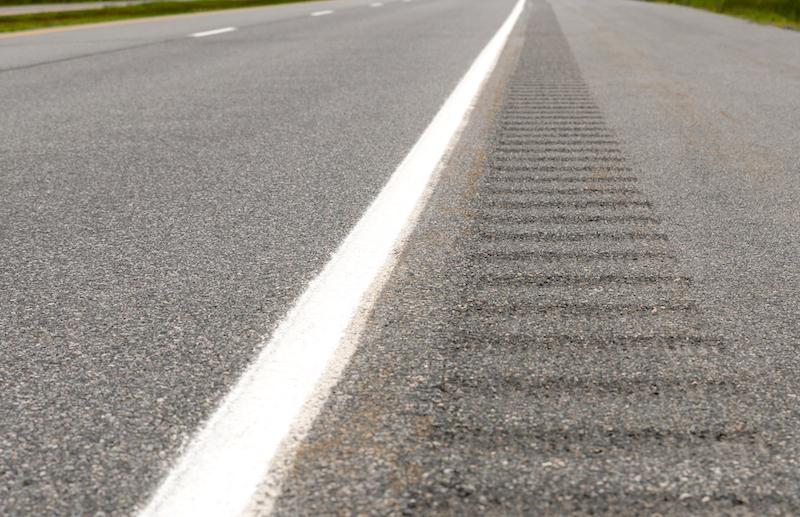You’re on day two of a long road trip and didn’t realize you were sleepy until your tires hit the rumble strip. Or you didn’t get enough hours of sleep last night, and now you’re questioning if you’re too tired to get behind the wheel at all—let alone tackle that drive from Cleveland to Austin.
At Lemonade Car we care about your safety—and the well-being of all drivers, animals, and other lifeforms out there on the road. (Not to mention inanimate objects—highway barriers have feelings, too!).
Check out our tips and tricks on how to identify the signs of being too sleepy to drive, and how to prevent drowsy driving in general.
What are the dangers of drowsy driving?
You might be wondering “What’s the big deal with a little sleepiness? I’ll just roll the windows down for some fresh air and crank the tunes.”
Unfortunately, that might not be enough.
According to estimates from The National Highway Traffic Safety Administration, every year about 100,000 police-reported, drowsy-driving crashes result in nearly 800 fatalities, and about 50,000 injuries. These statistics alone should put you on high alert.
Sleep deprivation has physical side effects like:
- Delayed reaction times
- Less awareness of hazards
- Decreased attention span
All of these make it harder to practice safe driving. It’s never a good idea to drive while tired or suffering from sleep deprivation, especially if you’re going long distances. So it’s important to check in with yourself before you even get behind the wheel to identify if there are any signs that you’re too tired to drive.
What are some signs that I’m too tired to drive?

If you’re looking for a big hint that you’re too tired to drive, consider these your “wake up” calls.
- Forgetting the last few miles of driving
- Yawning, rubbing your eyes, and restlessness
- Drooping eyelids and a nodding head (like when you used to drift off in math class)
- Erratic driving—like drifting over the lines, hitting the rumble strip, or bouncing off curbs
What techniques won’t actually help me stay awake while driving?
There are some driving tips out there that just won’t do the trick when you’re sleep-deprived, and could even be dangerous. If you’re trying to prevent drowsy driving, avoid these tactics.
Eating while driving
If you think that munching on your favorite road-trip snacks will help keep you alert behind the wheel, think again. Eating or drinking while driving—even if it’s guzzling an energy drink—actually makes the problem worse.
One study reports that snacking behind the wheel slows reaction times by 44%. If you regularly drive with one hand on the wheel and a cup of coffee in the other, you could take longer to react by 22%, compared to a driver that keeps both hands on the wheel.
Blasting the radio
Belting your heart out to a playlist on the radio during a road trip is an American tradition. Jamming to your music on the highest volume may be part of the fun of a long drive, but even the greatest hits won’t keep you awake long-term.
Rolling down the window or turning on the A/C
The shock of cold air from the A/C or fresh air from an open window may wake you up temporarily, but the effect is at best just that—temporary.
Talking on the phone
Has your attention ever wandered while you’re on the phone at home, listening to a friend complain about her new boyfriend (or was it her ex-boyfriend?) Then chances are your mind will be in places other than the road ahead if you’re talking on the phone while driving.
If your pal’s latest drama does capture your attention, you’ll be even more distracted. And distracted driving isn’t any better than drowsy driving.
Listening to audiobooks or podcasts
Considering diving into that new Stephen King novel on your next drive? Think about the type of driving you’ll be doing. One study found that listening to audiobooks while driving a boring course improved reaction times and had a good impact. So if your road trip is going to be long, flat, and straight, crank up the King.
But this might not apply if you’re navigating a complex route, one that that involves lots of twists and turns. Driving through a busy city? Skip the audiobook.
What could help increase my energy levels before and during a drive?

So, what does keep you awake and alert while driving?
Getting a good night’s sleep
If you know that you’re facing a long trip the next day, make sure to get enough sleep. Even general tiredness can impact your driving skills, so get those zzz’s!
Exercising before driving
Go for a quick run, do some jumping jacks, take a 20-minute HIIT Peleton ride—whatever gets your heart rate and oxygen levels up before you settle in for a long drive.
Taking a power nap
Find a safe place to pull off the road and take a power nap. The Sleep Foundation says that even a 20-minute nap can boost your concentration and energy levels. But keep it short—if you nap for too long and enter deep sleep, you could wake up groggy.
Drinking a cup of coffee
Some caffeine can boost alertness, but don’t overdo it (and don’t drink it while driving, since holding that cup is a distraction). Also, skip the sugar, which could make you jittery, followed by a sugar crash shortly after.
It can take up to 30 minutes for that cup of joe to enter your bloodstream, so don’t count on it kicking in right away. And be aware that, even when caffeinated, you can experience what are known as micro-sleeps—short lapses in attention that last long enough to cause an accident.
Taking public transit or a rideshare
Ask yourself if you could avoid driving while sleepy altogether. Could you take the bus or train home after a long shift? Or call a rideshare? Driving less is one way to avoid drowsy driving (and to lower your car insurance rates).
Trading drivers
Carpooling is a great way to avoid driving while sleep deprived. With more than one driver, you can take turns. And when you’re in the passenger seat, take a power nap!
Choosing the time of day you’re driving wisely
Pay attention to your circadian rhythms when planning your drive. Your circadian rhythm is the internal, 24-hour cycle of sleepiness. Most people are sleepiest at night and experience a post-lunch dip in energy levels. Try to plan your road trip for when you know you’ll be more alert.
Drive safe and save…
Look, you might have driven while drowsy in the past and nothing bad happened. You got lucky. But why continue to push that luck?
At Lemonade Car, the way you drive matters. We crunch numbers on how much and how well you drive to determine your safety score during each 6-month term. Then, we reward safe drivers with savings.
You’re safest behind the wheel when you’re awake and alert. By avoiding driving while drowsy you’ll keep yourself and others safe—and you may also find yourself eligible for lower car insurance rates.




